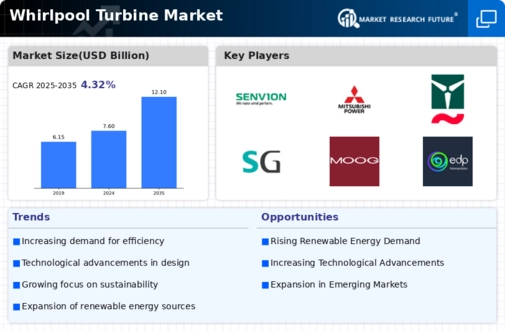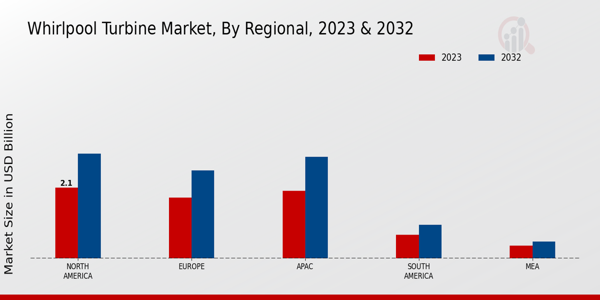Market Growth Projections
The Global Whirlpool Turbine Market Industry is projected to experience substantial growth over the next decade. With a market value expected to reach 7.6 USD Billion in 2024 and an anticipated increase to 12.1 USD Billion by 2035, the industry is poised for significant expansion. This growth trajectory suggests a compound annual growth rate (CAGR) of 4.31% from 2025 to 2035, indicating a robust market environment. Such projections reflect the increasing demand for renewable energy solutions and the ongoing advancements in turbine technology, which are likely to attract further investments and innovations in the sector.
Regulatory Support and Incentives
Regulatory frameworks and incentives play a crucial role in shaping the Global Whirlpool Turbine Market Industry. Many governments are implementing policies that promote the use of renewable energy technologies, including whirlpool turbines. These policies often include tax incentives, grants, and subsidies aimed at encouraging investment in clean energy projects. Such supportive measures are likely to enhance market growth, as they reduce financial barriers for developers and investors. As the regulatory landscape continues to evolve, it is anticipated that these incentives will further stimulate the adoption of whirlpool turbines, contributing to a more sustainable energy future.
Growing Demand for Renewable Energy
The Global Whirlpool Turbine Market Industry is witnessing a surge in demand driven by the global shift towards renewable energy sources. Governments worldwide are increasingly investing in sustainable energy solutions, which has led to a heightened interest in whirlpool turbines. These turbines are recognized for their efficiency in harnessing energy from water currents. For instance, the market is projected to reach 7.6 USD Billion in 2024, reflecting the growing commitment to renewable energy initiatives. This trend is likely to continue, as countries aim to meet their carbon reduction targets, thereby enhancing the market's growth potential.
Increasing Investment in Hydropower Projects
The Global Whirlpool Turbine Market Industry is benefiting from a notable increase in investments directed towards hydropower projects. Governments and private entities are recognizing the potential of hydropower as a reliable and sustainable energy source. For instance, several countries are initiating large-scale hydropower projects that incorporate whirlpool turbines, further driving market growth. By 2035, the market is projected to expand to 12.1 USD Billion, indicating a robust investment climate. This influx of capital is likely to enhance research and development efforts, leading to more efficient turbine technologies and broader applications.
Technological Advancements in Turbine Design
Innovations in turbine technology are significantly influencing the Global Whirlpool Turbine Market Industry. Enhanced designs and materials are improving the efficiency and durability of whirlpool turbines, making them more appealing to investors and energy producers. For example, advancements in computational fluid dynamics have enabled the development of more efficient turbine shapes that maximize energy extraction. As a result, the market is expected to grow at a CAGR of 4.31% from 2025 to 2035. This technological evolution not only boosts performance but also reduces operational costs, thereby attracting more stakeholders to the industry.
Rising Awareness of Environmental Sustainability
There is a growing awareness of environmental sustainability among consumers and businesses, which is positively impacting the Global Whirlpool Turbine Market Industry. As societies become more conscious of their ecological footprints, the demand for clean energy solutions, including whirlpool turbines, is increasing. This shift is prompting energy producers to adopt more sustainable practices, thereby fostering market growth. The emphasis on reducing greenhouse gas emissions aligns with the operational benefits of whirlpool turbines, which offer a cleaner alternative to fossil fuels. Consequently, this trend is expected to sustain the market's upward trajectory in the coming years.











